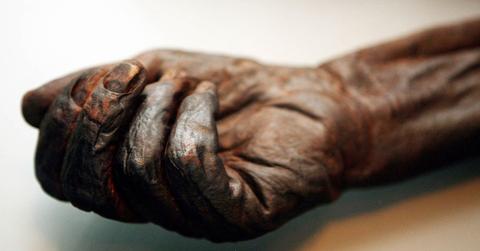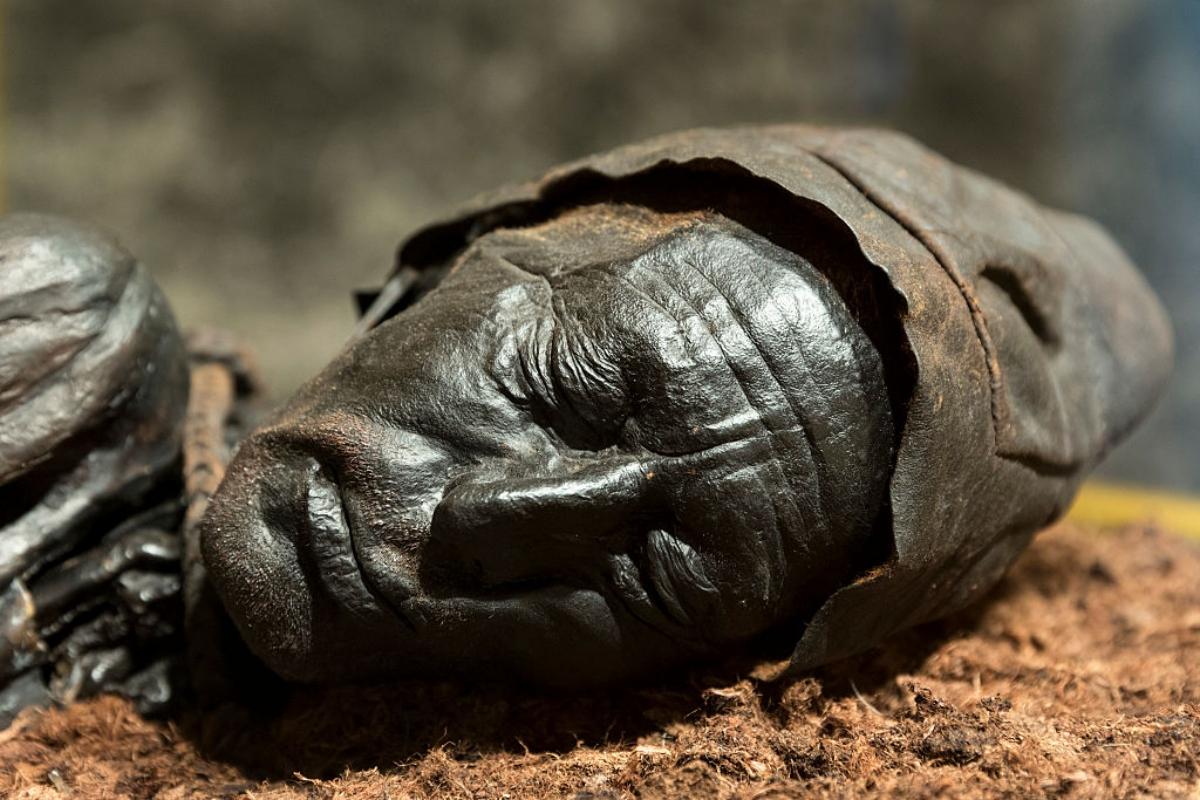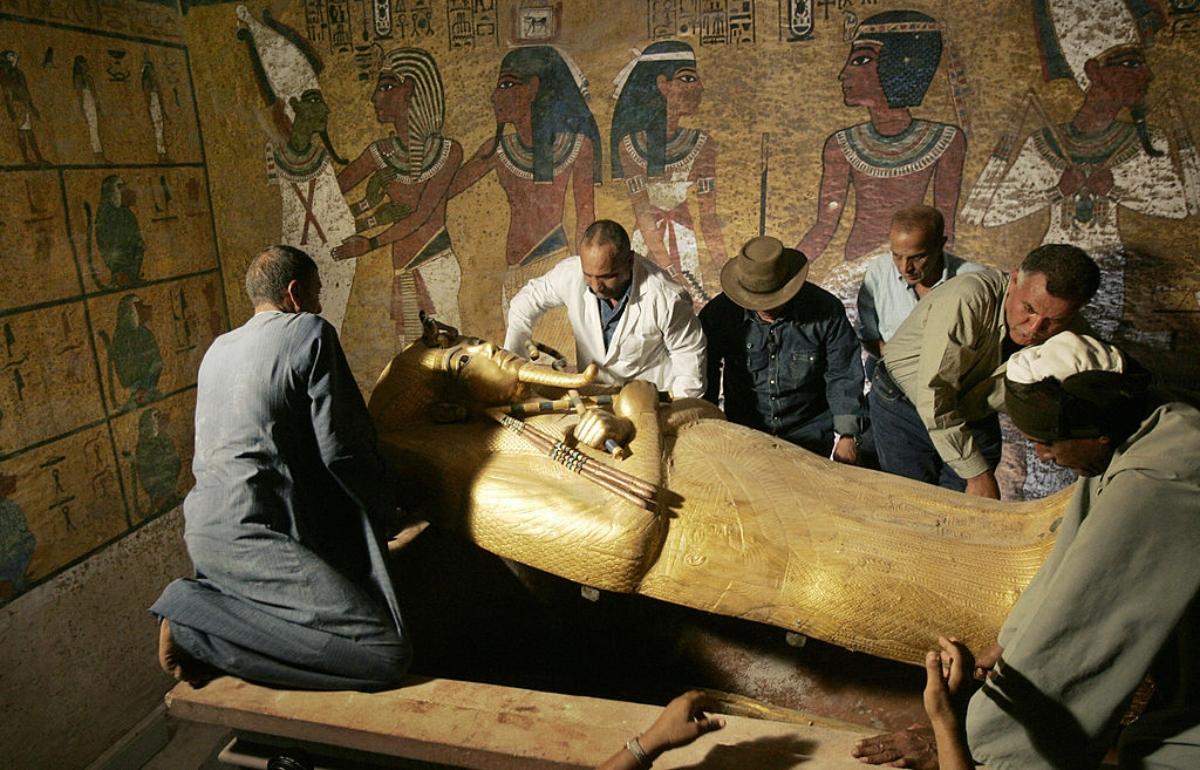All About the Elling Woman: A Mummified Bog Body Miraculously Discovered With Braided Hair
Published Oct. 12 2023, 10:22 a.m. ET

Remains of Oldcroghan Man, a bog body found in Ireland.
The Gist:
- Bog bodies are remarkably well-preserved bodies of ancient human beings.
- There have been bog bodies discovered in much of northern Europe including Denmark and Norway.
- The Elling Woman is a famous bog body that was found with even her braid intact.
Bog bodies are a phenomenon that has largely taken place in parts of the United Kingdom, Scandinavia, and eastern Europe. These bodies of individuals who lived thousands of years ago are well-preserved due to the unique conditions of bog areas of those countries. One of the most notable bog bodies found was the Elling Woman, with braided hair preserved.
Keep reading to learn all about the Elling Woman and bog bodies.

The "Tollund Man" is one of the oldest bog bodies, seen at a museum in Denmark.
What is a bog body?
Bog bodies, per National Geographic, are corpses still largely intact even 2,000 years after death. Bog bodies reveal a great deal about ancient civilizations. From research on the bodies, scientists have learned many of the bog bodies were people killed in violent ways, likely as a sacrificial ritual.
How do these bog bodies remain so preserved after so many years, rather than decomposing? There's sphagnum moss in the peat bogs that interacts with peat and water to create an “antiseptic” bog environment, according to National Geographic. The majority of bog bodies have been found in northern Europe, though preserved skeletons have been found in peat ponds in Florida. The stagnant water is an oxygen-free environment, which prevents decay.
CNN reported on a study of about 1,000 bog bodies found at 266 sites, which found that the majority of bog bodies were of people who had died intentionally and gruesomely. Out of 57 bodies for which a cause of death was determined, 45 had violence involved. The Tollund Man is one of the most well-known bog bodies, and he died by hanging (found not far from where the Elling woman was discovered).
The study classified three types of bog bodies: bog mummies, bog skeletons, and partial remains of either one, per CNN. Bog mummies are the impressive ones preserved with skin, hair, and soft tissue still intact. Bog skeletons are, logically, complete bodies but only the bones are preserved.
The Elling woman is a famous bog body found with her hair still in braids.
According to Britannica, the Elling Woman is one of the most renowned bog bodies, discovered in 1938. The Elling Woman's body was found in the Bjældskovdal bog in Denmark. The woman was approximately 25 years old at her time of death, and dating methods show she lived around 280 BCE, or early in the Iron Age.
The Elling Woman's hair remained even thousands of years after her death. She was found with a "finely braided pigtail," per Britannica, and a rope of skin was also found with her body. According to the BBC, the Elling Woman's braid was 90 centimeters (about 3 feet) in length, red in color (like most other bog bodies' hair, due to a chemical reaction), and tied in a knot.
To this day, some people try to recreate the Elling woman's braided hairstyle.

Officials carefully moving the lid of the sarcophagus containing the mummy of King Tutankhamen (in 2007).
There are differences between a bog body and a mummy.
According to the National Geographic Society, bog bodies aren't much different from mummies, except in that bog bodies' preservation is accidental. The natural chemistry of the bogs is what resulted in these bodies lasting for millennia, while Egyptians intentionally preserved bodies into mummies.
There are some other differences. According to Sustainable Nano, it's possible to identify a bog body person's last meal, while Egyptian mummies don't reveal that kind of information. Either way, bog bodies are a fascinating way to explore history, as gruesome as historical events may be.